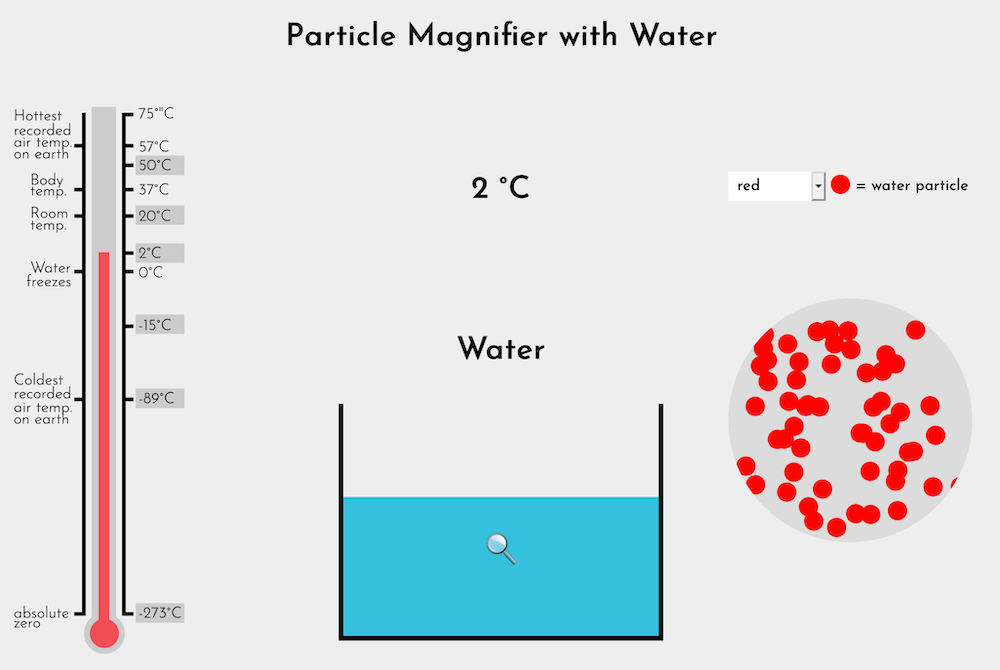Particle Magnifier

The Particle Magnifier (Water) showing water at 2°C
Use these links to launch the Particle Magnifier in a new window:
Investigation 12
Investigation 16
At different points in this curriculum unit students have explained a process (e.g., salt dissolving in water; water evaporating) by making reference to particles too small to see. This explanation corresponds with scientists' understanding that all matter is composed of individual particles (atoms or molecules) too small to see. How small are these particles? It would take trillions of water molecules to form a drop of water with a diameter the same as the period at the end of this sentence.
The Particle Magnifier allows students to use this interactive model to study the arrangement and motion of water particles in their solid, liquid, and gaseous states, and supports the concept that, regardless of state, the particles themselves remain the same. A user can select one of six different temperatures on the thermometer to observe how particles respond to different amounts of heat energy.
Although the specific focus of the model is water, it's important to let students know that the following 5 key ideas, which the model highlights, are true for matter in general:
- matter is composed of tiny individual particles
- particles of matter are in motion whenever heat energy is present (temperatures above absolute zero)
- particle motion increases with temperature (amount of heat energy)
- particles of matter attract one another - somewhat the way magnets do - and are "locked" together (solids) unless the motion caused by heat energy becomes strong enough to cause particles to break loose from one another (melt) and sliding past and/or bump one another
- when enough heat energy is added, particles of matter can fly off the surface of a liquid or solid and into the air, something that changes the form of matter (to a gas) but not the matter itself
Two Versions of the Particle Magnifier

Particle Magnifier (Water-Air) showing air at 50°C
The Water version of the Particle Magnifier, which is used in Investigation 12, provides a microscopic view of the ice and water inside the container, and extends students' explorations of the water-ice transformations in Investigations 10-12. It does not include a magnified view of the air above the container since students will not start to explore the properties of air until Investigation 14.
The Water-Air (full version) of the Particle Magnifier is introduced in Investigation 16. Users can elect to view water particles in the container as well as in the air above the container. The full version of the Particle Magnifier extends students' explorations of air in Investigations 13-16, and extends their understanding of evaporation, which they explored earlier in the curriculum unit.
There is no option to view air particles at -273°C, since at this temperature there would be no gaseous form of matter. Nitrogen, oxygen, and all of the elements that usually compose our atmosphere would be solids before the temperature reached absolute zero.
Color selection of the particles in the model is arbitrary, and can be changed using the dropdown menus.



